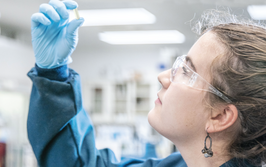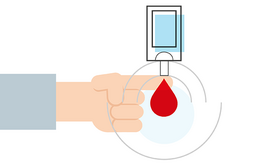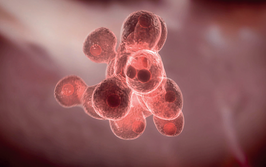
Plant Power
How much untapped potential do plants have for both discovering and manufacturing drugs?
In the June issue of The Medicine Maker, we delved into the potential power of the cannabis plant and why it could lead to new medicines for unmet needs (http://tmm.txp.to/0617/cannabis). However, cannabis is not the only plant that could have practical uses in the pharma industry. When it comes to drug discovery, Cassandra Quave urges the industry not to overlook ethnobotany, particularly when it comes to the search for new antibiotics, while Johannes F. Buyel believes that plants, such as tobacco, could have a role to play in manufacturing.
Green Fingers
Even in early childhood, I was always interested in medicine and plants, and I have fond memories of my mother teaching us how to slice open the aloe plant in our backyard and apply it to treat burns. My earliest scientific interests ranged from microbiology to emergency medicine, but in college I became fascinated with anthropology and ecology – and this ultimately culminated in two research trips to the Peruvian Amazon during my senior year. Those trips to the Amazon, where I worked with a shaman and learned about the important role of botanical medicines in the ethnopharmacy of the region, solidified my path towards this field. Today, I run the Quave Research Group at Emory University in Atlanta, USA, which is composed of an interdisciplinary team of scientists passionate about translational science geared towards the improvement of human health. Our research group takes the ethnobotanical approach (the study of human interactions with plants) to drug discovery, and one of our focuses has been to try to discover new solutions for one of the world’s most pressing medical issues: antibiotic resistance. Our research has already shown that some medicinal plants are good sources of novel compounds that can be developed and used to either enhance or restore the efficacy of existing lines of antibiotics.
Plants are a great place to look for new medicinal compounds because they produce a broad array of biologically active compounds used in their defense, as well as to attract pollinators and seed dispersers to compete with other organisms in their biological niche. Before the golden era of antibiotics (1950s), plant products represented more than one fifth (22 percent) of all new chemical entities used in medicine. Plant life can provide a rich source of medicinal compounds, as only a very small fraction of the known plant species on earth (the total estimated at ~450,000) have been investigated for the presence of antimicrobial compounds – and only 1 to 10 percent of this total number are currently exploited by humans for medicine. Over the years, we have worked with many fascinating plant species. Today, we have extracts for more than 400 species in the freezer and in the line-up for various bioactivity screens. If I had to pick the top three most fascinating species we’ve worked on so far, it would be Castanea sativa (sweet chestnut), Rubus ulmifolius (elmleaf blackberry) and Schinus terebinthifolia (Brazilian peppertree). Each is used in traditional medicine for the treatment of skin infections, and yet none inhibit bacterial growth. Instead, we discovered that each interferes with other processes important to infection (biofilms and virulence factor production).
We have only begun to scratch the surface in the scientific exploration of the pharmacological potential of plant natural products. Despite their frequent use in various traditional medical systems and as dietary supplements, we still have much to learn concerning the safety and efficacy of the majority of plant ingredients in use. Based on our findings concerning medicinal plants used for the treatment of infectious disease, I think that they may be among the most underappreciated plants based on the ways in which they have been tested in the past. The most common models used to assess the antibacterial impact of plant extracts and isolated natural products has been for growth inhibition, but we need to move beyond this simplistic view and ask additional questions around how else they might work on the pathogen or the host.
Two of our major projects right now focus on isolation and de novo structure identification of novel natural product inhibitors of Staphylococcus aureus communication (quorum sensing inhibitors). We plan to investigate how these compounds, which shut down communications and virulence factor production, can be used to treat different types of staphylococcal infections in the future. We are also screening the Quave Natural Products Library (composed of more than 1,000 extracts from over 400 species) against high priority multidrug resistant pathogens, including superbugs like carbapenem resistant Enterobacteriaceae and multidrug resistant fungi, such as Candida auris. We are looking not only for new chemical entities that can target the growth and survival of these pathogens, but also compounds that can restore or enhance the activity of existing lines of antibiotics and antifungals, or act via completely novel pathways.
The problem with working in this field – as for many others in science – is science funding. We have some really exciting leads on our hands, but it is always difficult to convince traditional funding gatekeepers to support our work on natural product mixtures. The current drug development paradigm is extremely focused on single target, single compound approaches, whereas many natural products work better when tested in mixtures. This presents an inherent problem with achieving fundable scores in grant review sessions. We also need a more open mindset concerning mechanisms of action of future anti-infectives. We need to invest more funds, time and research resources towards exploration of non-traditional anti-infective pathways, such as virulence inhibitors, biofilm inhibitors, antibiotic sensitizers, and even host-targeted therapies. I’d love to see the pharma community pay more attention to plants and other natural sources of new compounds.
Cassandra Quave is the Curator of the Emory University Herbarium and Assistant Professor of Dermatology and Human Health, Atlanta, GA, USA.
- B Kelley, “Very large scale monoclonal antibody purification: the case for conventional unit operations”, Biotechnol. Prog., 23, 995-1008 (2007). PMID: 17887772.
- JF Buyel, RM Twyman, R Fischer, “Extraction and downstream processing of plant-derived recombinant proteins”, Biotechnol. Adv., 33, 902-913 (2015).
- PMID: 25922318.
- JF Buyel, RM Twyman, R Fischer, “Very-large-scale production of antibodies in plants: The biologization of manufacturing”, Biotechnol. Adv., 35, 458-465 (2017).
- PMID: 28347720
- KJ Whaley, A Hiatt, L Zeitlin, “Emerging antibody products and Nicotiana manufacturing”, Hum. Vacc. Immunother., 7, 349-356 (2011). PMID: 21358287.
- Y Tekoah et al., “Large-scale production of pharmaceutical proteins in plant cell culture-the protalix experience”, Plant Biotechnol. J., 13, 1199-1208 (2015). PMID: 26102075.
Cassandra Quave is the Curator of the Emory University Herbarium and Assistant Professor of Dermatology and Human Health, Atlanta, GA, USA.


















